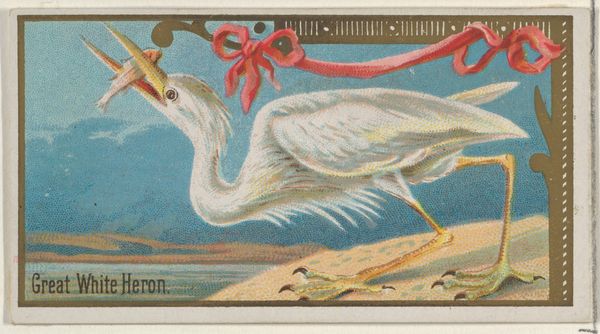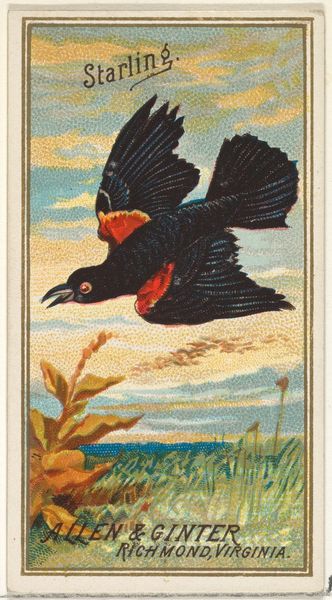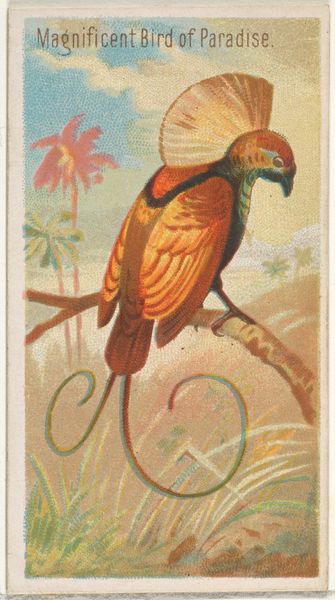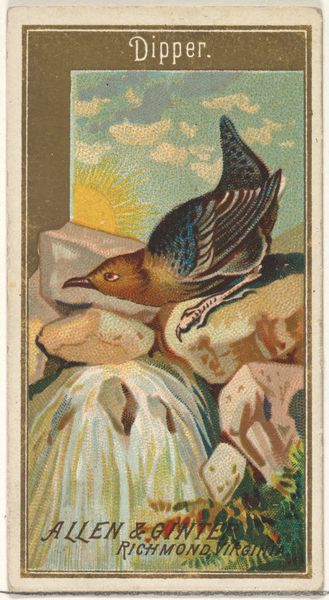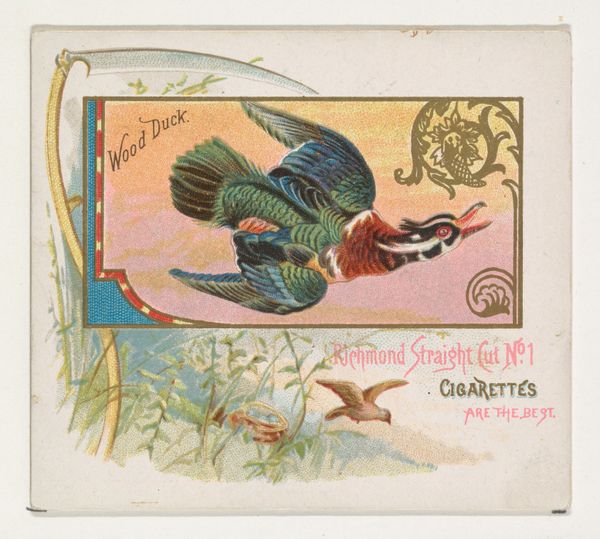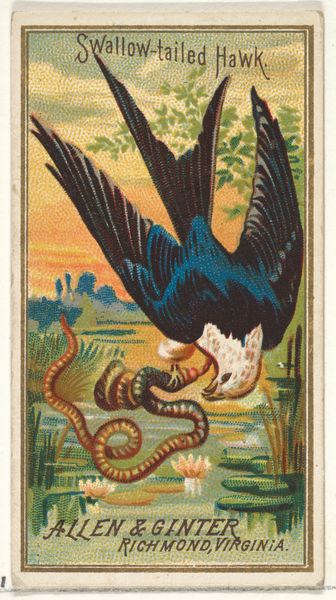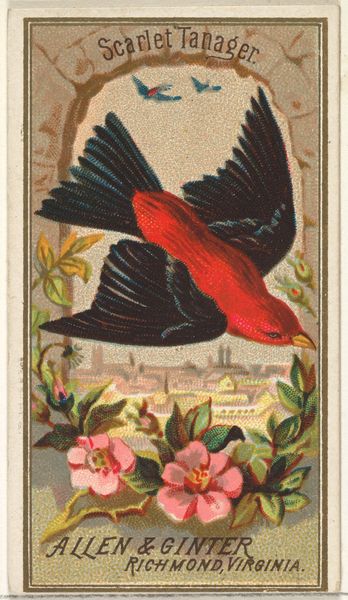
Kildeer Plover, from the Game Birds series (N13) for Allen & Ginter Cigarettes Brands 1889
0:00
0:00
Dimensions: Sheet: 1 1/2 x 2 3/4 in. (3.8 x 7 cm)
Copyright: Public Domain
Curator: Here we have "Kildeer Plover" from the Game Birds series, a chromolithograph produced in 1889 by Allen & Ginter for their cigarette cards. It resides here at The Metropolitan Museum of Art. Editor: My immediate impression is one of lightness. The bird seems to burst forth from the card. There’s an element of grace here, achieved through relatively simple means. Curator: Indeed. Notice the delicate application of watercolor and colored pencil, which creates a subtle depth despite the flat perspective, characteristic of the Orientalism style. The meticulous detail given to the bird's plumage exemplifies precision of the artist's hand. Editor: I find it difficult to detach this delicate rendering from the context of its creation: cigarette cards. The mass production of these images circulated representations of wildlife widely. What power structures allowed, or rather demanded, that they exist? Curator: The composition itself merits further observation. The subject matter is set against two zones, each with different hues, further divided in ground, and sky with a sharp line, a traditional staging of foreground against background—and yet these planes work to compress our viewing space as our focal point is always meant to stay centered. Editor: A fascinating approach given the time period—1889. Such emphasis on readily available images—animals depicted for a largely urban population—seems like a direct precursor to wildlife shows that gained momentum throughout the 20th century, normalizing human perspectives on the natural world. Curator: To push it a step further, the design creates an echo of movement—we almost perceive the action happening to this flying bird—not static, not without progression, yet a captured slice of life, forever stuck within the bounds of its cigarette card frame. Editor: Which makes me think further on its limitations. While undeniably skillful, the illustration feels removed from the bird's actual ecosystem and behavioral patterns. The presentation romanticizes, perhaps simplifying the true complexities of this bird's life and environment. Curator: That’s a very astute observation, seeing both within and outside the bird, a privilege to discuss a small but powerful visual. Editor: I agree; it shows how mass culture participated in broader shifts that emphasized commercial interests and commodification through nature's representation. A humble but meaningful conversation.
Comments
No comments
Be the first to comment and join the conversation on the ultimate creative platform.


